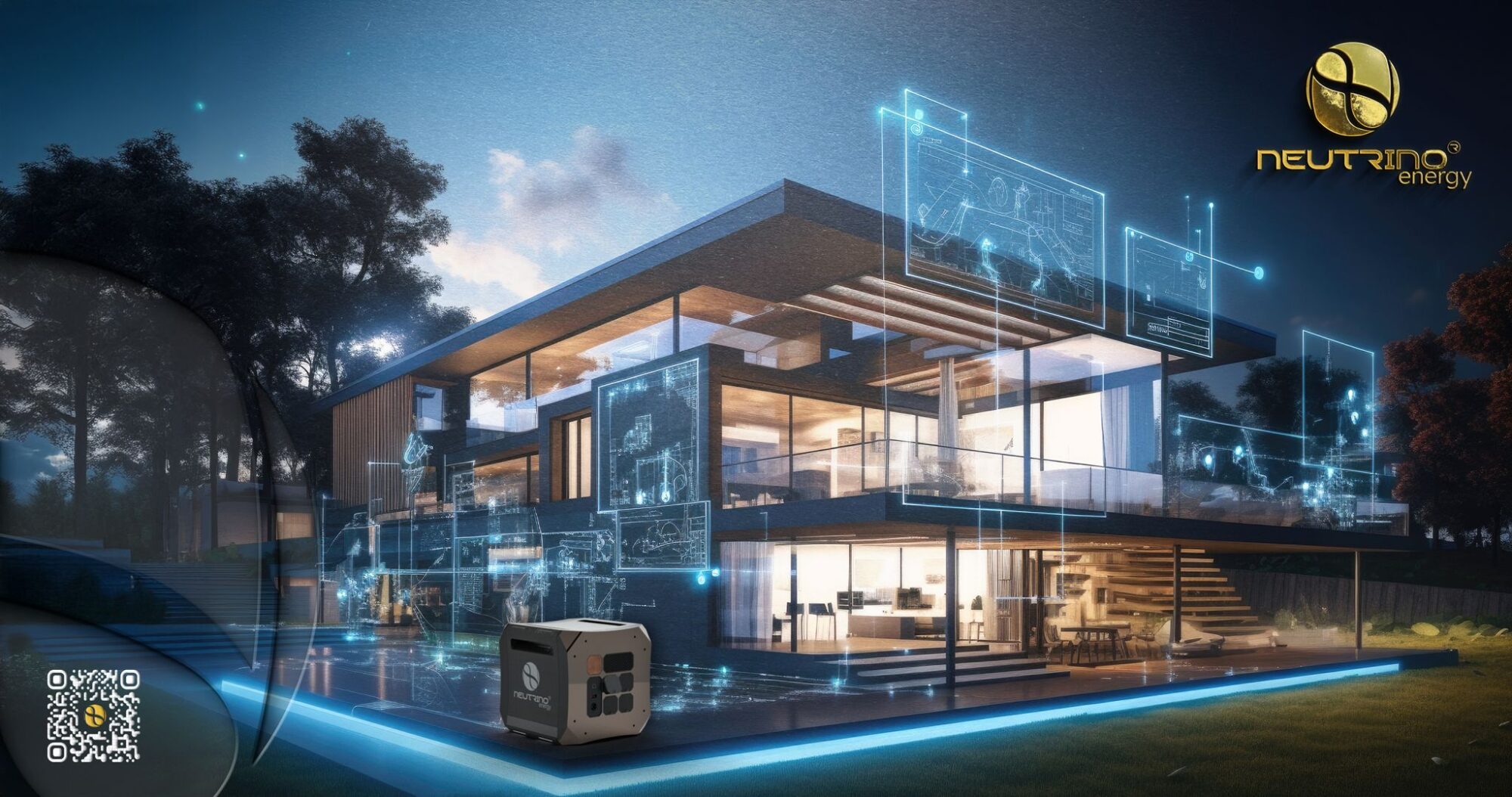Imagine a power source that doesn’t rely on sunlight, wind, or fossil fuels—one that works in total darkness, requires no moving parts, and produces no noise or emissions. It may sound like science fiction, but it’s rapidly becoming science fact. This is the core promise of the Neutrino Power Cube, a next-generation energy generator developed by the Neutrino® Energy Group, based on neutrinovoltaic technology. At its heart lies an entirely new paradigm in energy harvesting—using invisible cosmic radiation to generate continuous, clean electricity.
Energy from the Invisible Universe
Most people are familiar with visible light, the energy source that powers solar panels. But the electromagnetic spectrum extends far beyond the visible, encompassing invisible radiation like infrared, ultraviolet, and even cosmic particles known as neutrinos. Neutrinos are subatomic particles that stream through the universe at nearly the speed of light, produced in staggering numbers by nuclear reactions in stars, including our sun.
Every second, tens of billions of neutrinos pass through every square centimeter of Earth—including our bodies, buildings, and the planet’s crust—without leaving a trace. These particles are electrically neutral and interact only very weakly with matter, which is why they were long thought to be virtually undetectable and certainly unusable for energy applications.
But that changed with a fundamental breakthrough: the 2015 Nobel Prize in Physics confirmed that neutrinos have mass, however minuscule. That single fact unlocks their potential as an energy source. If a particle has mass and motion, it carries energy—and if we can interact with that motion, we can, in principle, extract power from it.
The Physics Behind Neutrinovoltaics
Neutrino® Energy Group’s technology builds on this idea by harnessing not just neutrinos, but a broader class of non-visible radiation and ambient electromagnetic waves. The process, called neutrinovoltaic conversion, translates the kinetic energy of these particles into usable electricity.
The core of this mechanism lies in a specially engineered multilayer nanomaterial—a sandwich of ultra-thin graphene and doped silicon. Graphene, a two-dimensional lattice of carbon atoms, is renowned for its strength, flexibility, and high electron mobility. By doping it with trace elements and layering it in a precise structure with silicon, scientists have created a material that vibrates at the atomic scale when struck by high-speed particles like neutrinos or other forms of radiation.
These vibrations—essentially microscopic mechanical motion—induce a flow of electrons. It’s similar in concept to how solar panels convert light into electricity, but unlike solar cells, neutrinovoltaic materials don’t need sunlight. They work in total darkness, under water, underground, indoors—anywhere, anytime.
From Lab to Reality: The Neutrino Power Cube
The Neutrino Power Cube is the first practical application of this technology, designed to supply reliable, off-grid electric power continuously, without any fuel input. Roughly the size of a compact refrigerator, each Cube produces 5 to 6 kilowatts of net electrical output—enough to power an average home or small business.
Inside the Cube, the multilayer neutrinovoltaic materials are arranged to maximize surface area and exposure to ambient radiation. Because the incoming particles are omnipresent and omnidirectional, there’s no need to orient the device or install it outdoors. The system operates silently, without combustion, without motion, and without thermal emissions.
It also includes an integrated inverter to convert the generated DC current to AC power, suitable for standard electrical applications. Because it is a solid-state device, the Cube has no wear-prone components—maintenance needs are minimal, and operational lifespan is measured in decades.
What Makes It Different?
What makes the Neutrino Power Cube fundamentally different from other renewable energy sources is its independence from environmental conditions. Solar power is intermittent and ineffective in poor lighting or cloudy conditions. Wind turbines depend on airflow. Even geothermal and hydroelectric systems require large infrastructure and specific geographic conditions.
In contrast, neutrinovoltaic energy is present 24/7. It does not fluctuate with the weather. It does not require a power grid or fuel logistics. It does not produce CO₂ or other emissions. And because the Cube can be deployed as a stand-alone unit, it’s ideal for rural areas, emergency systems, mobile installations, or data centers looking for uninterrupted power.
For developing nations or disaster-struck regions, this technology presents a way to leapfrog the grid entirely—bringing power directly to where it’s needed, without the cost or delay of transmission lines, substations, or fuel deliveries.
Why Haven’t You Heard of This?
Neutrinovoltaic technology has been quietly evolving over the past decade, primarily within research labs and engineering testbeds. The concept was once so unconventional that it attracted skepticism. Extracting energy from a source that passes invisibly and silently through matter seemed implausible. But like many groundbreaking technologies, neutrinovoltaics matured behind the scenes, driven by advances in quantum materials, nanofabrication, and particle physics.
The Neutrino® Energy Group, a multinational consortium of scientists and engineers, filed foundational patents in 2013 and has since developed prototypes and proof-of-concept systems. Today, the Power Cube stands not as a vision, but as a working, scalable product undergoing pre-commercial field deployment in Europe.
It’s not a replacement for all other energy technologies—but it doesn’t need to be. Instead, it offers a complementary solution where conventional approaches fall short: remote areas, sensitive equipment, or mission-critical systems that cannot afford downtime.
The Broader Implications
As society becomes increasingly digital, electric, and decentralized, energy reliability is paramount. Data centers, AI infrastructure, autonomous systems, and smart devices all demand continuous, low-maintenance power. Neutrinovoltaics is uniquely suited to these environments.
In fact, the technology’s silent operation and lack of heat generation make it an excellent candidate for indoor use in temperature-sensitive environments, from medical facilities to quantum computing labs. And because each Cube is modular and scalable, entire buildings or facilities can be powered by an array of units—without grid dependency.
Looking ahead, the integration of neutrinovoltaic energy with edge computing and AI-managed microgrids could enable truly autonomous energy ecosystems. Devices that generate their own power. Buildings that operate independently of the grid. Vehicles that recharge themselves silently while parked. Neutrino energy isn’t just about adding one more source to the mix—it’s about rethinking the very assumptions of how, where, and when we produce electricity.
The Silent Power of the Future
The Neutrino Power Cube represents a profound shift in how we think about energy—not as something extracted, burned, or stored, but something ambient, persistent, and ever-present. By turning the kinetic interactions of invisible radiation into electrical current, neutrinovoltaic technology delivers a power source that is always on, always available, and ready for the challenges of a carbon-constrained, electrified future.
For those hearing about it for the first time, the question may well be: Why didn’t we know about this sooner? As the Neutrino® Energy Group transitions from prototypes to scaled deployment, the quiet revolution of ambient energy harvesting is about to become unmissable.
Because the future of energy may not come with a roar—it may arrive in silence, powered by particles too small to see, yet too powerful to ignore.



































